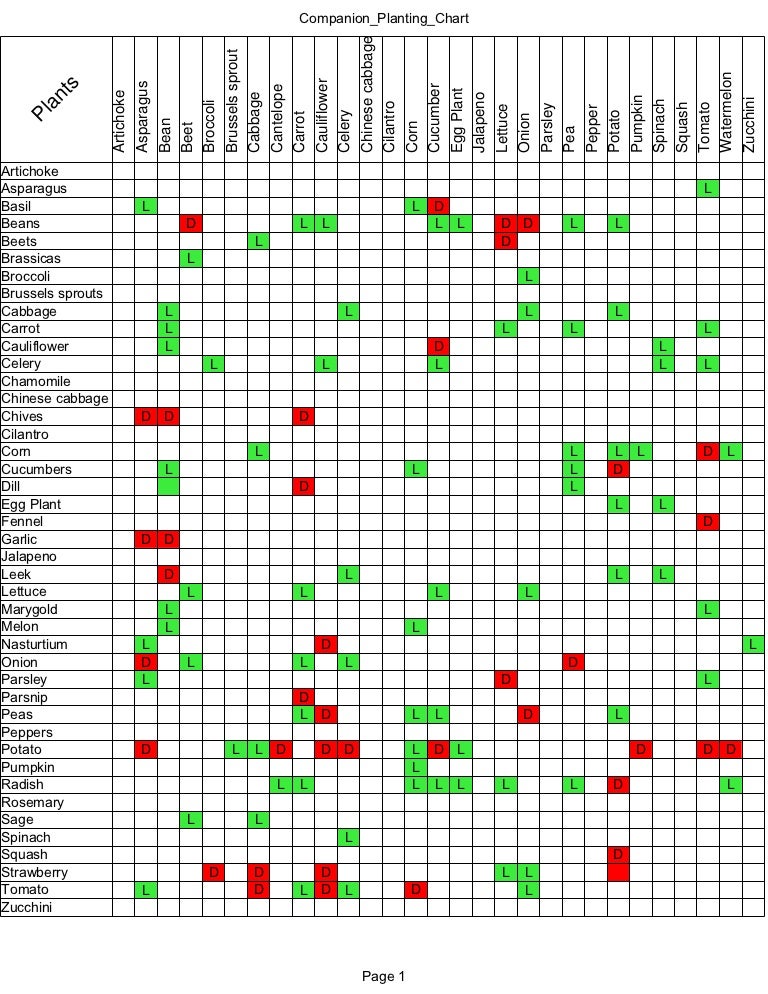In the world of gardening, companion planting is a widely used technique that involves pairing different plants together for mutual benefit. Whether you are a seasoned gardener or just starting out, having a companion planting chart can be a valuable resource. It provides essential information on which plants work well together, improving overall yield and reducing the need for pesticides.
Companion Planting Chart: A Visual Guide to Optimize Your Garden
 A companion planting chart is an excellent tool for any gardener. The chart is a visual representation of various plant combinations that thrive when grown together. It helps you make informed decisions about which plants to grow side by side, taking into account their nutritional needs, pest control properties, and growth habits.
A companion planting chart is an excellent tool for any gardener. The chart is a visual representation of various plant combinations that thrive when grown together. It helps you make informed decisions about which plants to grow side by side, taking into account their nutritional needs, pest control properties, and growth habits.
One of the key benefits of using a companion planting chart is pest control. Certain plant combinations work as natural pest repellents, reducing the need for harmful chemical pesticides. For example, planting marigolds near your tomatoes can deter pests like aphids and nematodes.
 Moreover, a companion planting chart helps you optimize space utilization in your garden. By combining plants with different growth habits, you can make the most of your available space. For instance, growing pole beans alongside corn can create a vertical growing system, maximizing the productivity of a small area.
Moreover, a companion planting chart helps you optimize space utilization in your garden. By combining plants with different growth habits, you can make the most of your available space. For instance, growing pole beans alongside corn can create a vertical growing system, maximizing the productivity of a small area.
When planning your garden, keep in mind the companion planting guidelines provided by the chart. Some plants are excellent companions, while others may inhibit each other’s growth. For example, onions and garlic have natural pest-repellent properties and pair well with many vegetable crops. On the other hand, it is best to avoid planting tomatoes near potatoes, as they can be susceptible to the same diseases.
 Companion planting charts are available in various formats, including printable PDFs. These charts provide detailed information about different plant combinations and make it easy to plan your garden. Many of these resources also offer additional tips and hints to help you become a more successful gardener.
Companion planting charts are available in various formats, including printable PDFs. These charts provide detailed information about different plant combinations and make it easy to plan your garden. Many of these resources also offer additional tips and hints to help you become a more successful gardener.
Whether you are a traditional gardener or prefer organic methods, companion planting is an essential technique that can significantly improve the health and productivity of your garden. By selecting the right plant combinations and using a companion planting chart as your guide, you can create an ecosystem within your garden that promotes healthy growth, natural pest control, and overall sustainability.
 So, if you want to take your gardening to the next level, consider incorporating a companion planting chart into your planning process. There are many resources available, both online and in print, that provide comprehensive guides to help you make informed decisions about which plants to pair together.
So, if you want to take your gardening to the next level, consider incorporating a companion planting chart into your planning process. There are many resources available, both online and in print, that provide comprehensive guides to help you make informed decisions about which plants to pair together.
Remember, gardening is a journey of continuous learning, and utilizing tools like a companion planting chart can further enhance your knowledge and skills. With the right combinations, your garden can thrive, providing you with delicious, bountiful harvests and a beautiful outdoor space to enjoy.
Happy gardening!